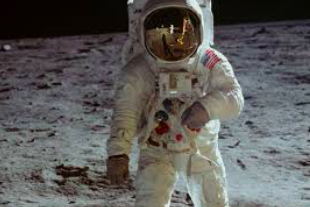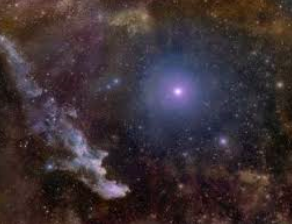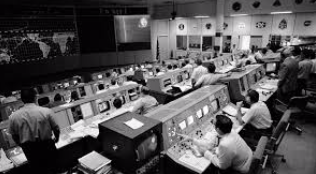Point Loma: Apollo 11 – As Time Goes By

If you were alive at the time, where were you when this happened? Lots of stuff going on at the time – the hangover from the race riots following the assassinations of MLK and RFK, Nixon’s election, stagflation, and the Viet Nam War’s nightly body counts made for a confusing and kaleidoscopic backdrop. Here was one moment of extreme clarity.
I watched this happen in person 50 years ago so yeah, I’m getting old. Like getting laid for the first time, it is one of the things that I can recall with almost total clarity (which is getting a little bit harder for other things these days). I remember hanging with my fellow Boy Scout BFF at the time, David, who said that this was going to be important and that we had to see it live.
We stayed up all night to watch it on a 12 inch B&W TV – not only the landing, but the entire EVA and liftoff. Like almost everyone else in America, we watched CBS and the unforgettable Walter Cronkite’s broadcast of the event, tears in his eyes at the report of a successful landing.

Walter Cronkite caught up in the moment.
However, I learned some new things today.
After the landing, I kept the NASA mission feeds going in the background while working on other things and trying to stay out of the heat of the Swamp. It was fascinating to hear how the crew had to secure the landing site, safe the LM, and figure out where the fuck they were. Shutting down the LM’s engine was just the beginning…
First, the now alternate landing site was deemed to be secure based on the orientation of the LM and how it sat on the lunar surface and the terrain around it which permitted the EVA, but since it was different than planned, there was some level of angst but the consensus at Mission Control was to stay and not abort the EVA – shit, they were there. We are more than familiar with the standard NASA “go – no go” roll calls but the “stay – not stay” roll calls were a bit of a revelation.
The next order of business was to vent the remaining LM’s residual descent fuel. While the media made a big deal drama of only having 30 seconds of fuel remaining, it turned into a problem on the surface. Getting rid of the fuel was screwed up by a frozen valve which was building up back pressure at an alarming rate, and potentially turning the LM into a bomb. Armstrong and Aldrin couldn’t see it accurately from the onboard LM instruments but Houston could from the telemetry. They had Buzz continually execute manual cycling of the purge valve until they had that under control, and the ice in the vent line finally melted to release the back pressure.
The final thing was to accurately place the LM on the surface so the ensuing and all-important lunar rendezvous orbit (LRO) with Mike Collins and the CSM would go according to plan – sort of important. The first problem was fixing the exact time of landing and the start of the lunar mission clock. They tried to do that several different ways but with not much success in establishing the electronic time synch between Houston, the CSM, and the LM. The work-around was to take an established future checkpoint where the exact known location of the CSM was going to be and working it backwards.
However, the next challenge was to fix the exact location of the LM on the surface (note that there is no GPS in outer space). While everyone extolls the exploits of Armstrong and Aldrin and the reputation of excellence of Navy and Air Force test pilots, the reality was that they landed four miles long, so that threw off the original mission calculations.
I’m sure in Armstrong’s decision-making getting the LM safely to the surface was the primary feat, and the most important part of the mission. Getting off the surface was a problem to be solved later – compartmentalization. The solution worked out between Houston and the Tranquility Base crew was to take fixes off the star Rigel (right boot of Orion) and local gravimetric readings from the LM”s sensors to compensate for the delta in location.

Rigel – Orion’s Brightest Star.
Thus, the equations for timing and point of lunar lift-off now solved, the EVA mission could proceed with confidence that the LRO would go according to the modified plan. If you want to see what a big deal this might be, watch the end of the movie “The Martian.” You only get one chance with otherwise non-maneuverable space craft in low planetary orbit. Another cool thing is this web site.
The final thing that impressed me was the vintage shots of Mission Control at Houston and the sheer amount of technology and brainpower that went into the Apollo Enterprise.

Aside from the complexity and magnitude of skills required, I suspect that in some ways this is aimed at our space rivals (e.g., China) as a PSYOP. The message being – if you want to do this, there may be some level of AI/ML and quantum computing that you can apply, but in the end, it’s the human factor, the experiences of the Mercury and Gemini manned space-flight programs, and immense level of talent that needs to be involved.
Better strap on your big boy Cheongsams. Mission Control was recently renovated as a museum – I want to go see it
What you don’t see is the teams that sit in rooms outside of Mission Control that back up the main players at the consoles. NASA in the day had a fair amount of computer support running in the background using the punch card technology of the day, but it was no substitute for a room full of smart guys with slide rules. I still have one from my high school calculus and trig classes…somewhere.
You do know that your smart phone has more computing power than the entire CSM of the day – scary to think about what that means these days.

A Slide Rule – Still better than an iPhone
And if you didn’t watch the replays today, or were born after 20 July 1969, that’s okay. I only know that I saw it, love the memory, and will never forget the dedication and courage of the Apollo 11 crew and the entire Apollo Enterprise and their “can-do” spirit – really show-cased during Apollo 13. While he resigned from the Navy as a LTJG, Neil Armstrong never really left us, and was buried at sea following his death in 2012.
He was not a saint and not without fault as a Naval Aviator and NASA test pilot. You can read about it here.
Like Vic and the rest of us near or beyond retirement age, we are contemplating our individual legacies and the hereafter. I’ve told my wife to give my sorry ashes to the Navy and bury me at sea. If it was good enough for Neil Armstrong, then it’s good enough for me.
Copyright 2019 Point Loma
www.vicsocotra.com
